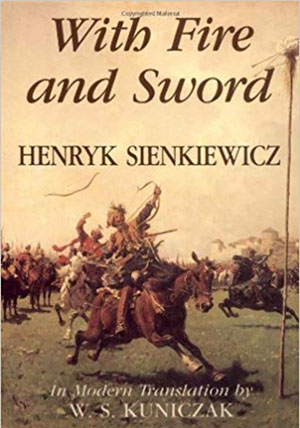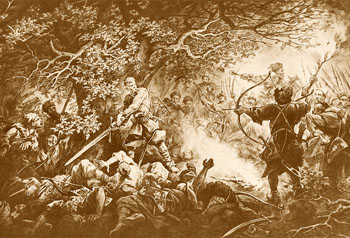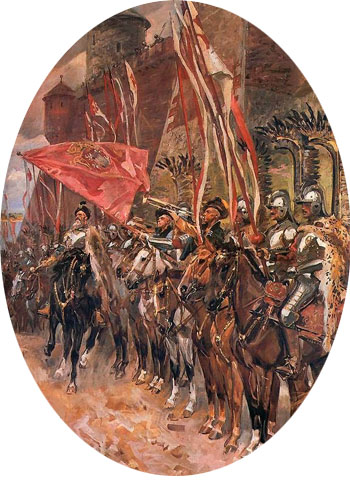Book reviews
 |
 |
 |
 |
 |
 |
 |
An Epic Poland, Unknown to the West
Book review of With Fire and Sword (An Historical Novel of Poland and Russia) by Henryk Sienkiewicz
Vol. 1 of The Trilogy (Boston: Little, Brown & Co, 1900, trans. by Jeremiah Curtin)
Vol. 1 of The Trilogy (Boston: Little, Brown & Co, 1900, trans. by Jeremiah Curtin)

The first volume of a series known to Poles as The Trilogy
Henryk Sienkiewicz, the son of an impoverished nobleman, was born in 1846 in eastern Poland, which was controlled by Russia at the time.
Perhaps best known for his book Quo Vadis, a historic novel set in Nero's Rome, he also wrote prolifically about the Polish struggles in the 17th century in the Cossack rebellion led by Bogdan Chlemnitsky in league with the Crimean tartars. Polish history is not readily known to most Western readers, especially in the English-speaking world, so it was with some trepidation that I began my adventure.
Poland in the 16th century was the largest country in Europe: Comprising Poland, Lithuania, and the Ukraine, it was known as the Polish Commonwealth. The Kings of Poland were elected by the nobility both great and small.
As I entered into the history, it became apparent to me that, without Catholic Poland and Spain, Europe would have been overwhelmed by the Moslem hordes. Poland in the East and Spain in the South and West were bulwarks of Catholic resistance against the Moslems.
Protestant Europe was of no help in resistance to the Moslems. Luther stated "We refuse to march against the Turks or contribute to this cause. The government of the Pope is ten times worse than that of the Turks. lf the Turks were exterminated, it would be necessary to begin with the Pope." (Hartmann Grisar, Luther, London, 1914, vol. 3, p. 326)
Sienkiewicz wrote three historical novels known as his Trilogy: With Fire and Sword, The Deluge, and Pan Michael. It was these books that I happened upon in my library.
The Cossack Rebellion
The first book, With Fire and Sword was published in 1884 and dealt with the Cossack Rebellion led by Bogdan Chmelnitski in 1648. The second, The Deluge, published in 1886, describes the Swedish Invasion of Poland and the Battle of Czestochowa, from about 1655 to 1661. The third book, Pan Michael, deals with the Polish-Ottoman War of 1662 to 1676.

The giant warrior Pan Longinus makes a vow to not marry until he has decapitated three Muslims with one blow
For example, Pan Longinus Podbiepieta, the Lithuanian giant, wielded a sword with one hand that ordinary people could not lift with two. Podbiepieta had taken a vow not to marry until he fulfilled his goal of decapitating three Muslims with one blow, which one of his forebearers had accomplished. This he finally achieved at the Siege of Zbaraz in 1649 where he gave his life.
There, 10,000 to 12,000 Poles and Lithuanians were surrounded by a horde of 250,000 Cossacks and Tartars. They were at last rescued by the Polish King John Casimir with 15,000-20,000 men after being warned by Pan John Krestuski, who managed to escape from Zbaraz. All these men will live forever in History as epic characters, willing to face impossible odds and win, placing their confidence in Our Lord and Our Lady.
Prince Jeremy Wisniowiecki is a real historical figure who was the prototype of a Catholic warrior - steadfast, courageous and faithful to his King and Church. He spent his whole fortune and gave his blood to defend his homeland and the Church against the Eastern hordes.

Poles line up for the battle at Zbaraz in 1649
Continued

Posted October 21, 2019
______________________
______________________
 Volume I |
 Volume II |
 Volume III |
 Volume IV |
 Volume V |
 Volume VI |
 Volume VII |
 Volume VIII |
 Volume IX |
 Volume X |
 Volume XI |
 Special Edition |


